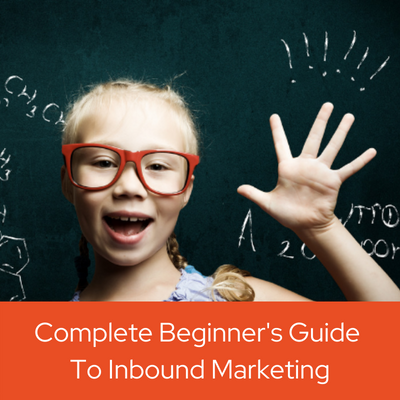Why Your Content Marketing Is Failing & What To Do About It: Part 2
Content marketing is one of the most important aspects of a successful online presence, but it's not without its challenges. In particular, content often fails when businesses focus on themselves rather than their buyers' needs, sell rather than educate, and don't address the most critical questions which were discussed in the first part of our "Why Your Content Marketing Is Failing (And What To Do About It)" blog series.
At 3P Creative Group, we have written close to one thousand articles (some have been viewed more than 100,000 times and significantly contributed up to $300,000 in revenue for a single post) and coached many of our clients on how to write successful content internally.
To help you avoid making some of the most common mistakes, we will examine in this article how a lack of buy-in, content ownership, and accountability could set you up for failure before we take a closer look in Part 3 at how the Digital Buyer impacts how content is used in sales today.
As a reminder, here is an overview of the top ten reasons why content marketing fails:
- You are talking about yourself, not your buyer's problems
- You are selling, not educating
- You don't address the most important questions: The Big Five
- There’s no buy-in from leadership
- You are outsourcing content production
- No one owns your content creation
- You do not measure what works and what doesn't
- Sales isn't involved in content production (Part 3, coming soon)
- Sales isn't using content in the sales process (Part 3, coming soon)
- You don't adapt to changing consumer behaviors (Part 3, coming soon)
Let's dive right in.
4. You Don't Have Leadership Buy-In
To be successful with content marketing, you need the buy-in and support of your executive leadership. Content marketing is a cultural shift, not a marketing tactic, and requires many resources — including people, time, and money. Executive leadership needs to be on board with content marketing to give it the resources it needs to be successful.
Why It Doesn't Work
Great Content Marketing is not about one-time transactions. It is all about creating trust and, hopefully, long-term relationships with customers by offering helpful, expert advice and being transparent and unbiased. The goal is to become the trusted voice in your space. This takes not only time and resources which executive leadership needs to be willing to allocate, but also a company culture that puts the customer first.
Executive leadership can help set the tone for the rest of the company regarding content marketing. If they're on board, employees will be more likely to get on board as well. The opposite is also true. If executives resist content marketing, employees are likely to follow their lead. So executive leadership must be on board with content marketing if you want to see success with it.
What You Can Do About It
The single best thing you can do is to hold a company-wide alignment workshop that everyone — from your CEO to your die-hard, cold-calling salesperson — attends. A lot of content marketers or marketing executives have tried this before and are frustrated that it got dismissed as another silly marketing idea. Sometimes, our clients find it easier to bring in an outside coach to "be the voice of reason" as it can be hard to change company culture from within.
5. You Are Outsourcing Your Content Production
According to a recent study by the Content Marketing Institute, 62% of technology companies outsource at least one content marketing activity. However, marketers that do outsource content production often encounter multiple challenges.
Why It Doesn't Work
Outsourcing content creation is less effective than creating content in-house for various reasons.
First, it often isn't easy to find a content marketing firm that understands your business and your audience as well as you do. Outsourcing content creation means entrusting your content to someone else who may not have a thorough understanding of your brand's message or voice. They may be unfamiliar with the audience and industry you're targeting, which can lead to content that lacks authenticity and fails to truly connect with your target market. Working with an outsider also makes it more difficult for them to understand critical concepts and ideas, leading to content that isn't as well-crafted as it would be if developed by someone within your organization.
Furthermore, outsourced content is often created quickly, with little focus on quality. This content tends to be generic, lacks originality, and fails to capture the attention of your target audience.
What You Can Do About It
With content created in-house, you have more control over its direction and can ensure it is written or designed to meet specific standards. You can also work closely with subject matter experts within your organization so that content is tailored to fit your brand's message and goals.
Employees who work for your company have a much deeper understanding of the industry and the needs of your target audience than an outside content creator would. This knowledge translates into content that is more accurate, meaningful, and helpful to readers.
Having content creation handled by internal teams also helps ensure a consistent brand voice across all content platforms. It's difficult for an outside agency or freelancer to capture the unique tone and style of your business; after all, they don't work in your industry every day. Plus, content created with an insider's point of view can come off as more authentic and trustworthy than content written by someone outside the company — making it more attractive to potential customers.
Finally, in-house content creation is often less expensive than outsourcing content creation because you don't have to pay a content marketing firm or freelancer for their services. It can also be faster and more efficient since employees, who are already familiar with the company's products and services, can get the content out quickly without having to learn about the business first.
Overall, content created in-house gives you more control over its quality, accuracy, authenticity, and cost — making it a better option than outsourcing content creation. With an internal team of content creators who understand your industry and target audience inside and out, you can rest assured that your content will meet high standards of excellence every time.
6. No One Owns Your Content Creation
Whether you take care of your content creation within your organization or hire an outside agency to do it for you, someone internally has to own it. In other words, someone within your organization has to be accountable and responsible for ensuring that the agreed-upon assets are getting published, the quality and voice are consistently on brand, and the performance metrics are being met.
Why It Doesn't Work
For most organizations, content creation is something that happens when there is a little bit of spare time. Rather than publishing three pieces of content every week, some weeks will see two blog posts followed by weeks in which nothing gets published.
According to a HubSpot study from 2015, companies that publish 16 or more blog posts a month generate 4.5 times more leads than those with four monthly blog posts. Since then, the pendulum has swung from quantity to quality. While it is still essential to get a consistent number of blog posts out every week, it is even more important that quality standards are met. However, none of this will ever happen if you do not have a dedicated owner and full-time content marketer.
What You Can Do About It
The best option is to hire an internal full-time content manager whose sole responsibility is to create three pieces of Big Five content (see You don't address the most critical questions: The Big Five) a week by interviewing subject matter experts. They don't have to know your industry inside and out or have a marketing background (that is quickly learned along the way in this role), but they do need to be naturally curious and be excellent writers.
The important thing to remember is that they cannot wear multiple hats in this role or they will have to deprioritize content creation, bringing you right back to where you started.
7. You Do Not Measure What Works & What Doesn't
Being successful at something can only happen if you measure and track, compare and analyze, and always look for ways to improve. This is especially true in Content Marketing. If we publish three weekly articles, we have more than 150 blog posts in a year. How do they impact our bottom line? Which topics convert visitors into leads and then customers? Which articles generate a lot of traffic but only unqualified leads?

Why It Doesn't Work
There are about 6 million blog posts published every day! That is so much noise. If you just hit publish without tracking its impact on your business, you simply add to the noise.
What You Can Do About It
KPIs provide content marketers with vital information that can inform decisions and strategies. They offer essential insight into how content is performing and what resonates most with your audience. KPIs allow content marketers to measure success, understand their audience’s wants and needs, set realistic goals, make well-informed decisions, and ultimately develop content that delivers maximum value to readers, prospects, and customers.
By tracking the correct KPIs, content marketers can understand how content drives key business-related metrics like website visits, lead generation, sales conversions, customer engagement, and more. Rather than monitoring Facebook likes, focus on metrics that truly move the needle with your customers:
- Organic & Direct Traffic
- Your top 5 entry pages
- Visits-to-Lead Ratio (above 1% is great)
- Lead-to-Customer Ratio
- Time spent on page (indicator for how engaging your content is)
- Revenue Attribution (model used depends on the type of content)
- Customer Acquisition Cost
- Customer Lifetime Value
This enables content teams to make strategic content decisions that improve content performance, increase content ROI, and ultimately achieve content marketing success.
In Summary
Content Marketing is often seen as a low-priority investment by leadership. As a result, content creation might be outsourced to the cheapest freelancer or agency instead of investing in content expertise and resources. If nobody owns content creation in your organization, it’s more likely that content pieces will fall through the cracks.
You must also measure content performance to see what content is working and what content isn’t. Without doing so, you won’t know if your content efforts are practical or not. Track content performance metrics and use the insights from these measurements to inform strategies moving forward.
Related Resources:
Why Your Content Marketing Is Failing & What To Do About It Series:
- Part 1 (What You're Saying & How)
- Part 3 (coming soon)
Share this
You May Also Like
These Related Stories

Why Your Content Marketing Is Failing & What To Do About It: Pt. 3

Why Your Content Marketing Is Failing & What To Do About It: Part 1

.png?width=250&height=125&name=TrustBuilderLogoWhiteTranspBackgr(250x125%20px).png)




No Comments Yet
Let us know what you think